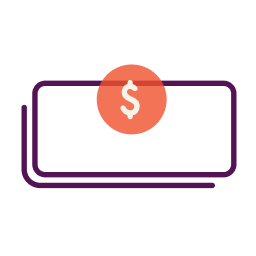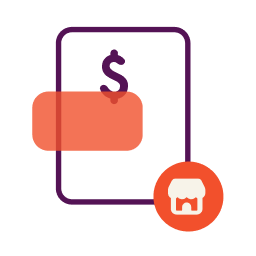5 Steps to Get Funding for a Business
- Determine how much business funding you need
- Evaluate options for business funding
- Find out what it takes to get funding for a business
- Understand where to find funding for a business
- Learn how to get business funding with no money
1. Determine how much funding you need
One of the most challenging decisions you’ll make in your business is whether to get financing, and if so, how much. To do so you’ll want to take into consideration:
- Use of funds. How will you use the money you borrow? Detailed projections will be helpful here.
- How much can you afford? How much can you afford to pay with the funds you borrow? Be sure to take into account how the new monthly payments will affect your cash flow.
- What will be the ROI on your funding? In other words, how will you use the funding to make more money?
Tip: Your SBA Resource Partner (SCORE, SBDC or SBTDC) can help you create a business plan that will guide you through these decisions. Find free help at SBA.gov.
2. Evaluate options for business funding
There are numerous financing options for your business. Here are the most popular types of financing to consider:
Business credit cards
Available to business owners with good to excellent credit (including startups), business credit cards offer a flexible line of credit that can be helpful for short-term cash flow needs. Consider a credit card with a 0% welcome offer to provide interest-free financing.
Line of credit
A line of credit will give you business funds it can access when it needs them. Ideal for filling short-term cash flow needs.
Term loan
Borrow a fixed amount of money for a specific period of time. Payments are often fixed as well. Ideal for specific projects with a definite time frame.
SBA loan
There are over ten different SBA loan programs which offer funds that can be used for working capital, equipment financing, real estate and a variety of other purposes. Rates and terms are excellent. Ideal for business owners with good credit who have had trouble securing financing elsewhere. A Small Business Development Center in your area may be able to answer your detailed questions and provide mentorship.
Merchant cash advance
One of the fastest funding options, merchant cash advances are based on revenues. The business receives an advance against future revenues and funding is repaid daily or weekly. Ideal for businesses with strong revenues that need very fast funding.
Invoice financing
Businesses that regularly invoice other businesses (B2B) may be able to get funding more quickly through invoice financing or factoring. The financing company advances the business funds against the invoice and either the business will repay the financing or, in the case of factoring, the financing firm will collect directly from the company that owes the invoice (factoring).
Equipment financing
Get financing for equipment purchases. Leasing is another option for obtaining equipment without a lot of cash upfront. Ideal for businesses needed to obtain equipment and also preserve cash.
Crowdfunding
Borrow or raise money from lots of people using crowdfunding platforms. With four major types of crowdfunding and many platforms, you may find one that suits your business. Ideal for businesses with an exciting project or business plan, or a loyal following.
Microloans
These small loans (usually less than $50,000) may be geared to businesses that have trouble qualifying for traditional financing. They’re often made by nonprofit lenders seeking to help underserved entrepreneurs (such as low-income, minority, rural or women-owned businesses). Ideal for businesses needing a small amount of capital.
Grants
Small business grants offer funding that does not have to be repaid. There are many grant programs available from private organizations or foundations. Local, state or federal grants (detailed at Grants.gov) are available, too, as well as grants from economic development organizations. Ideal for businesses that meet the criteria of the organizations making grants.
Vendors
Get payment terms (such as net-30 terms) with suppliers. Ideal for businesses looking to improve cash flow and build business credit.
Angel investors & venture capital
Businesses with strong growth potential may be able to get funding through investors, including angel investors and venture capitalists. Venture capital funding is hard to get, though, and will require giving up equity in the business. Ideal for businesses with a high likelihood of scaling quickly.
3. Find out what it takes to get business funding
Most small business financing decisions are based on three main factors:
- Revenues
- Credit
- Time in business
Any of these can make or break a small business loan application, so let’s look at what is needed for business funding more carefully.
Revenues
Lenders like to see that businesses have a strong track record of making money. Minimum revenue requirements vary, but many lenders will want to see that the business makes on average at least $10,000 per month in revenues. They may require copies of small business bank statements and/or business tax returns to verify revenues.
In a moment we’ll talk about options for businesses that aren’t making money.
Credit
It is very common for business lenders to check personal credit scores of business owners and some lenders check business credit. Credit requirements vary but for traditional lenders (such as banks) you’ll generally need good credit with credit scores of at least 680— 700 or more.
Business owners with poor credit scores may still qualify for financing that doesn’t require good credit, including crowdfunding, invoice financing or merchant cash advances. Some loans are more credit flexible, including equipment financing and microloans.
Time in Business
It is not uncommon for lenders to require at least 12-24 months in business before making a loan. There are some lenders that will lend to businesses with only 6-12 months in business; they typically require strong revenues.
Startups will have more challenges getting funding but there are options, including business credit cards, microloans, crowdfunding, and vendor terms. Some SBA loans are made available to business startups, but good credit and a strong business plan will likely be required.
4. Learn how to get business funding with no money
Whether your business is a new business that isn’t yet making money, or an existing business that is suffering from a setback in sales, getting financing without revenues can be difficult. If bootstrapping won’t take you far enough, you may need to get creative in looking for money for your business.
Options for entrepreneurs without money may include crowdfunding, small business credit cards, vendor financing, microloans, grants, and equipment financing. As well as friends and family are also a traditional source of financing for many businesses, especially when they are young.
5. Find funding for business
There are a number of funding sources small business owners can consider when trying to raise funds or get a small business loan.
Banks and credit unions often offer low interest rates and excellent repayment terms. Traditional bank loans also typically have high eligibility standards, and will require good credit.
If you are looking for crowdfunding, there are numerous crowdfunding platforms; many more than just kickstarter or indiegogo which you may be familiar with. Download a free list of crowdfunding sites at Crowdfundbetter.com.
Online lenders can often make decisions quickly. Rates will be higher than banks, but the application process will be considerably simpler.
Online lending marketplaces can match borrowers to small business loans based on qualifications, making it simpler and faster to shop for a loan.
If you hope to get an SBA loan, you likely won’t apply at SBA.gov. With the exception of Disaster Loans, the U.S. Small Business Administration doesn’t make loans, it guarantees them. Instead you’ll go to participating lenders such as banks or nonprofit organization Community Development Financial Institutions.
How Nav Helps Small Businesses Get Funding
Consider Nav your partner on your journey to find funding for a business. We know it can feel overwhelming — which is why it’s our mission to make the process easier for you. By signing up for a free Nav account and entering in a few business details, you’ll get matched with accurate funding opportunities that make sense for your business needs. You have enough stuff to handle running your own business, so leave the funding search to us. Our customer team is ready to offer technical assistance and to answer any questions (big or small) you have along the way.
This article was originally written on December 30, 2021 and updated on June 10, 2022.




Have at it! We'd love to hear from you and encourage a lively discussion among our users. Please help us keep our site clean and protect yourself. Refrain from posting overtly promotional content, and avoid disclosing personal information such as bank account or phone numbers.
Reviews Disclosure: The responses below are not provided or commissioned by the credit card, financing and service companies that appear on this site. Responses have not been reviewed, approved or otherwise endorsed by the credit card, financing and service companies and it is not their responsibility to ensure all posts and/or questions are answered.